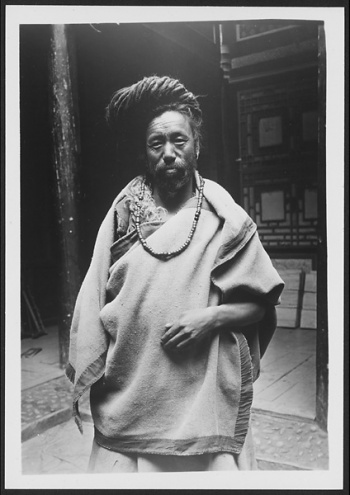Ngakpa

Ngakpa (Tib. སྔགས་པ་, Wyl. sngags pa ) are both healers and practitioners of the highest levels of Tantric Buddhism in the Himalayan regions.
The origins of Ngakpas is connected to Guru Rinpoche who, in Tibet during the 8th century, divided the Sangha into two branches: the red sangha of monastics with shaven-heads and the saffron robes (Wyl. rab byung ngur smig go see) and the white sangha of Ngakpas with white clothes and long, plaited hair (Wyl. gos dkar lcang lo’I see).
A realized Ngakpa can perform ceremonies to pacify illness, disease and help in other worldly activities and be a master of the inner levels of Tantra and Dzogchen practices dealing with liberation on others. However, many people confuse them as 'shamans' or just 'lay practitioners' and often times they were be belittled by those who are unaware of their history and importance as the torchbearers of an ancient Indian tradition.
As Khetsun Sangpo Rinpoche said, “for the ngakpa the purpose and final goal is enlightenment in order to liberate others and self. Usually in the shamanic tradition no one talks of enlightenment.”
According to Kunzang Dorje Rinpoche,
- There are two types of ngakpas – those of family lineage (rigs rgyud) and those of Dharma lineage (chos rgyud). Ngakpa family lineages are passed from father ngakpa to their sons from generation to generation. At present, these are family lineage holders such as the great lamas of the Nyingma tradition, Minling Trichen Rinpoche and Sakya Trizin, the throne holder of the Dharma Potrang lineage.[1]
Notes
- ↑ Kunzang Dorje, An Historic Description of Awareness Holders of the Great Secret Mantra who are Resplendent in White Clothes and Long Hair.
Internal Links
Among the main recent ngakpas are: